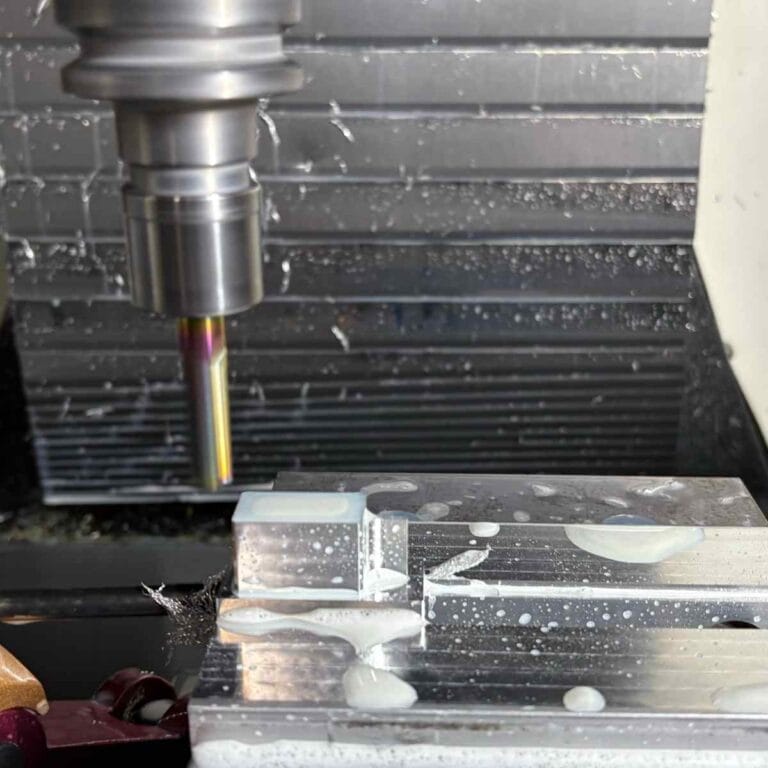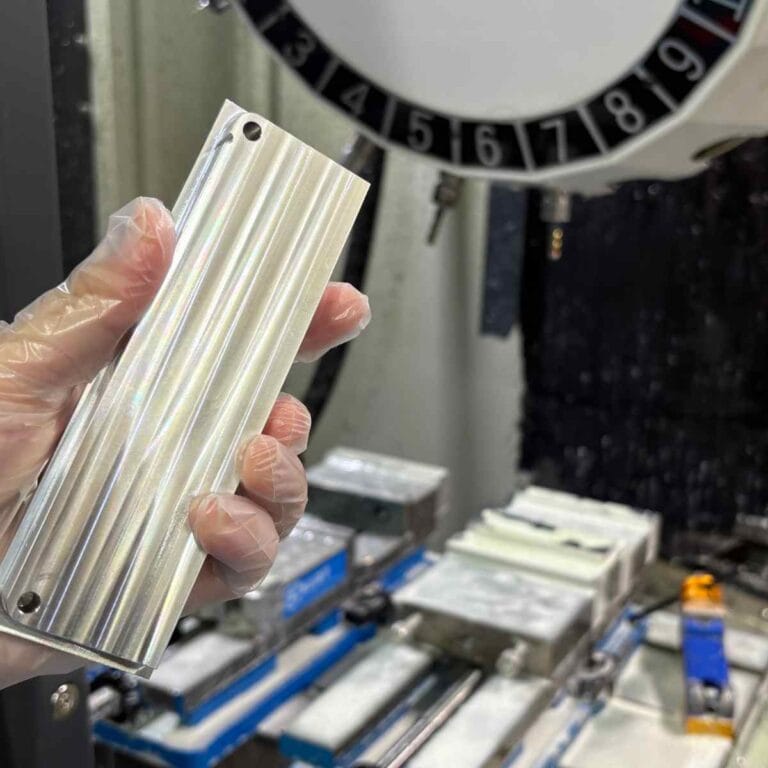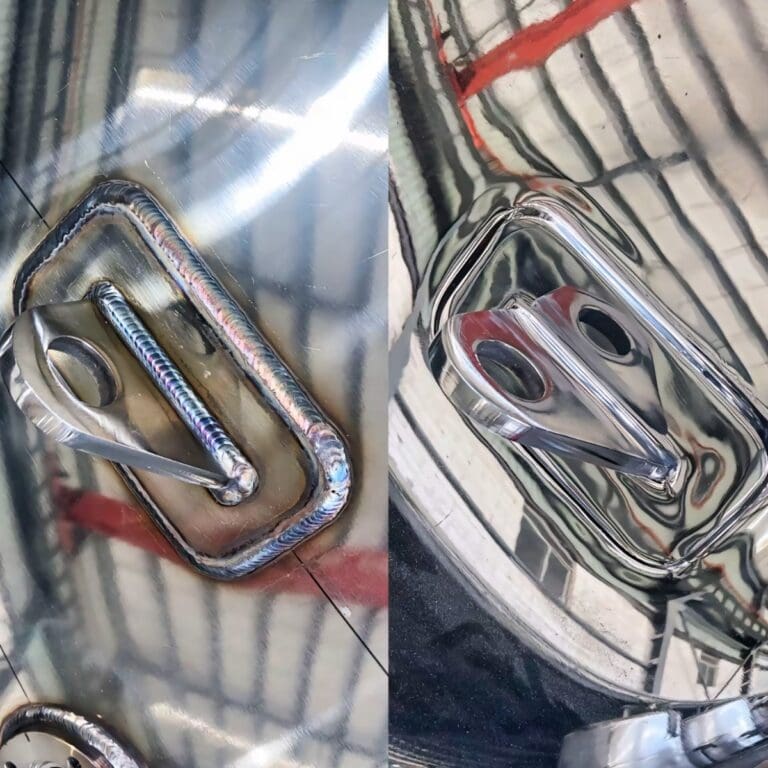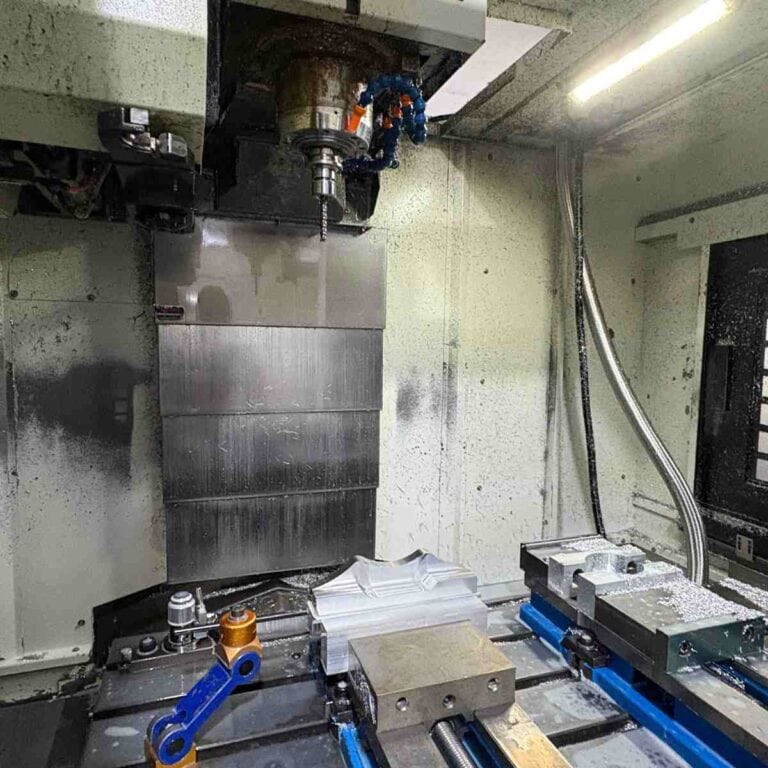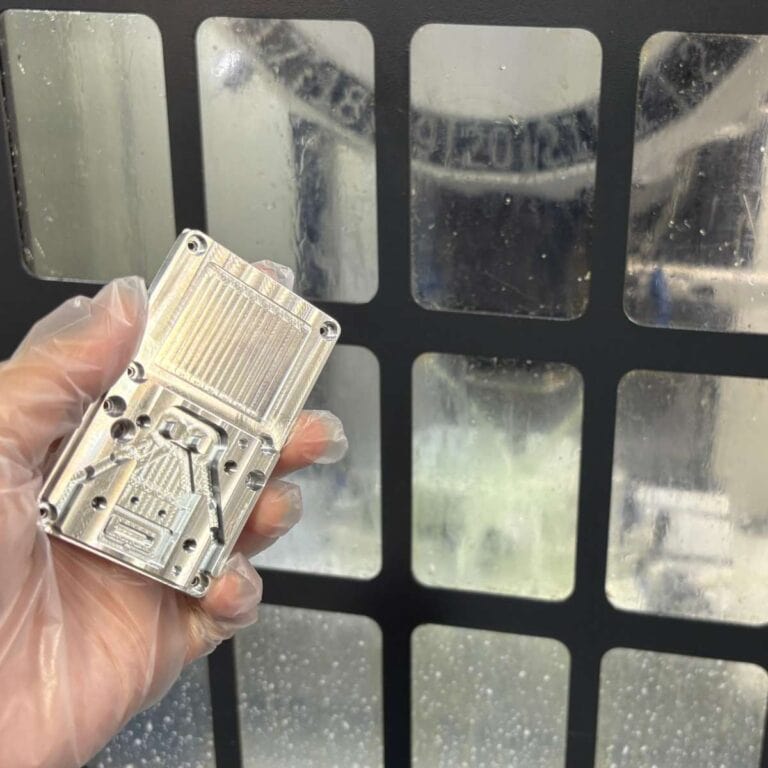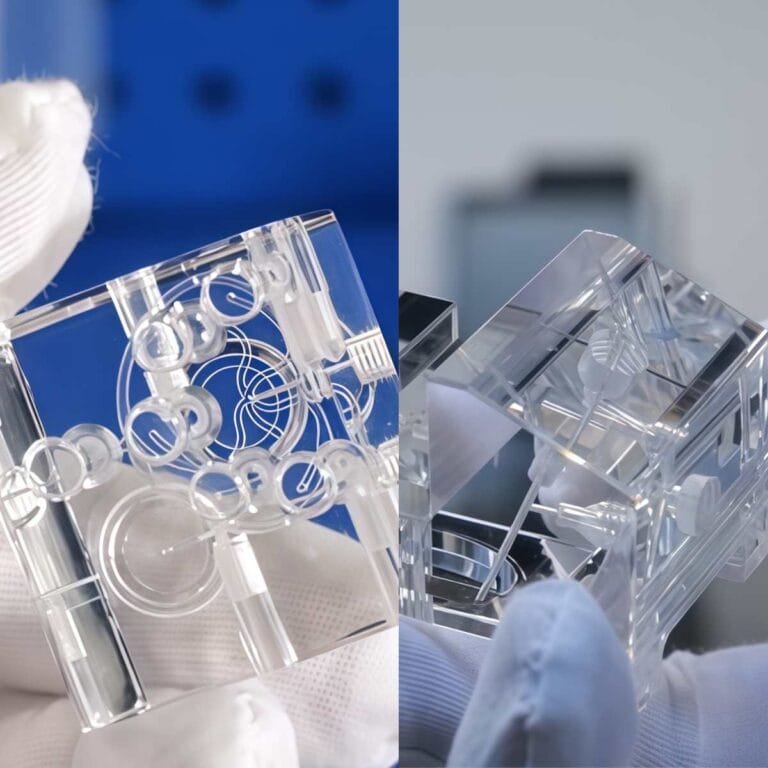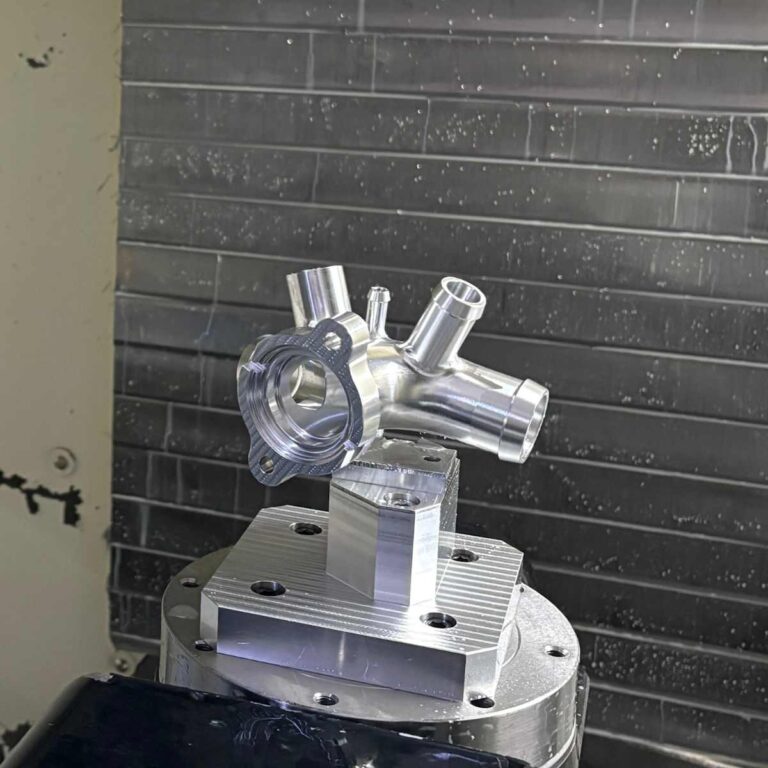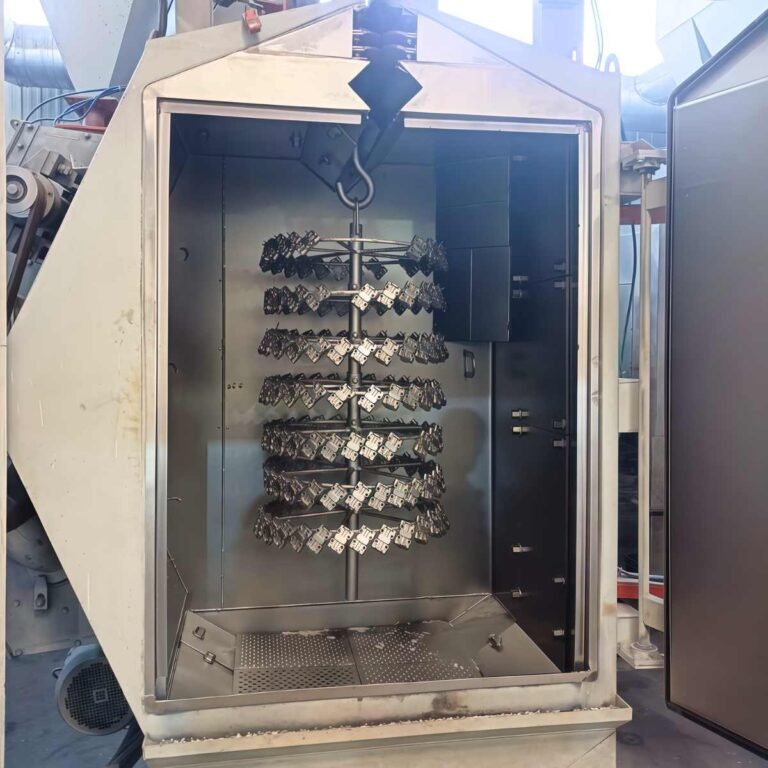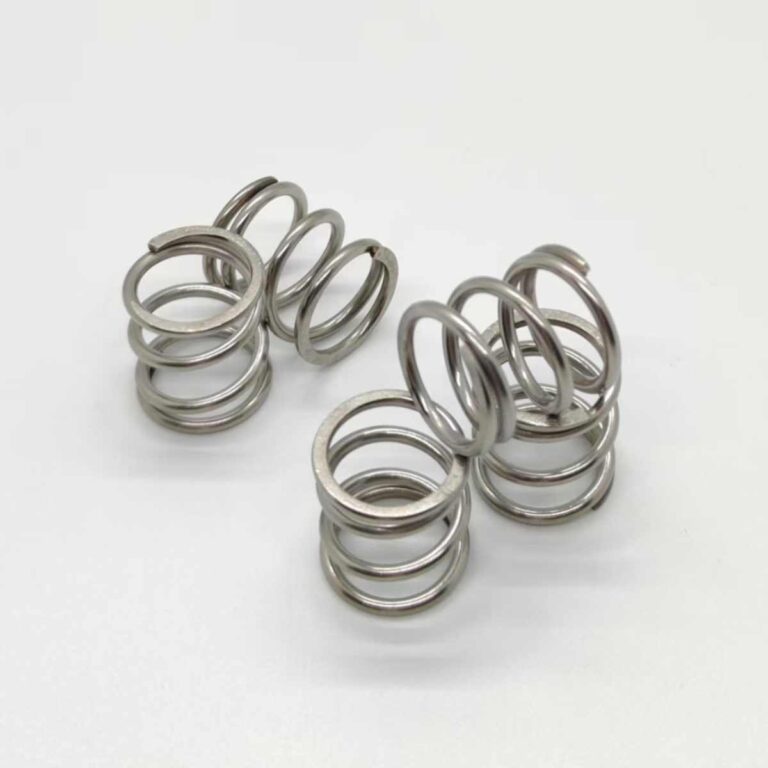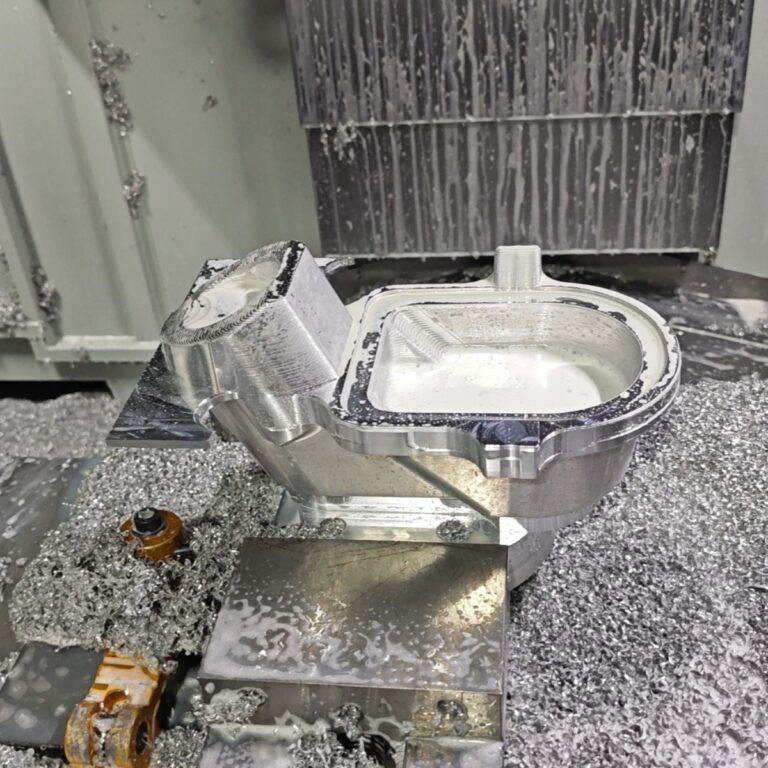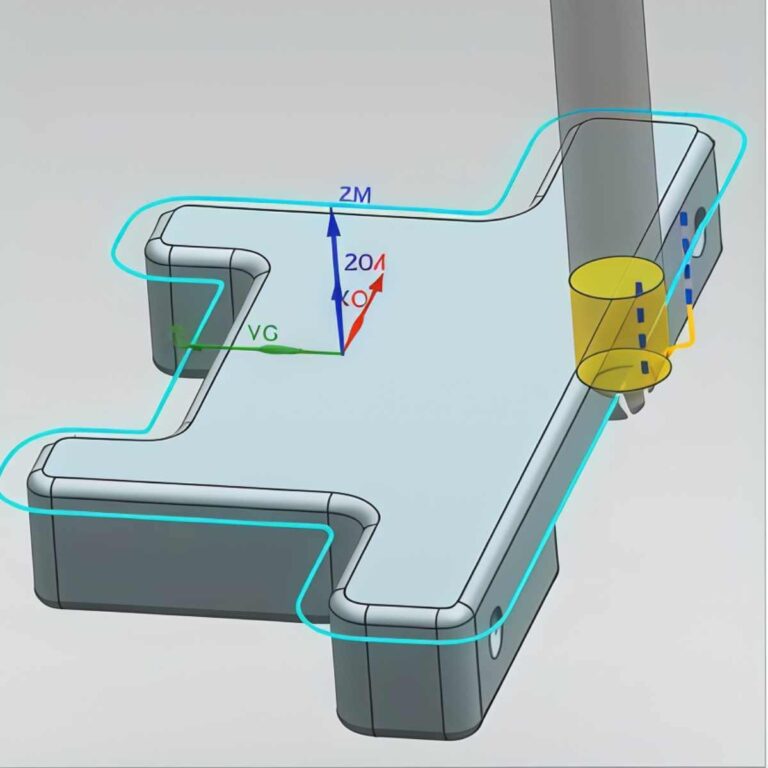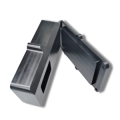Powder Coating vs Paint has become a classic comparison in the field of modern manufacturing and surface finishing. Powder coating is widely used in automobiles, home appliances, and industrial equipment due to its high durability, eco-friendliness, and uniform coating quality. On the other hand, paint remains the top choice in many industries because of its greater color flexibility and better adaptability to complex geometries. In this article, I will compare the two methods across principles, performance, cost, and environmental impact, supported by real-world data and industry case studies, to help you fully understand their strengths and limitations—and make the best decision for your specific project.
What Is Powder Coating
Powder coating is an advanced dry coating technology that uses electrostatic spraying to evenly adsorb powder materials on the surface of metal or other conductive materials, and then forms a dense and solid protective film through high temperature curing. Compared with traditional liquid coatings, powder coating does not contain solvents, so it is more environmentally friendly and can provide better wear resistance and corrosion resistance.
The core of powder coating process is electrostatic spraying and high temperature curing, which directly determine the uniformity, adhesion and final physical properties of the coating. Compared with traditional liquid spraying, powder spraying has higher utilization rate, less material waste, and stronger wear resistance and corrosion resistance.
When I tested it on a home appliance production line, I found that the material absorption efficiency of powder coating was over 90% , far exceeding the 60-70% of liquid coating . This means that powder coating can not only reduce costs, but also provide more consistent surface quality.
What Are The Different Types Of Powder Coating Materials
Powder coatings are mainly divided into three categories : epoxy resin, polyester/TGIC and fluorocarbon resin . They each have their own advantages in weather resistance, chemical resistance, mechanical properties and application scenarios , but also have certain limitations.

Epoxy Powder Coating
Epoxy powder coating is known for its excellent chemical corrosion resistance and adhesion, and is widely used in laboratory equipment, chemical pipelines, electrical housings and other harsh environments. I used epoxy powder coating in a project for a laboratory equipment manufacturer, and through acid and alkali resistance testing, I found that it remained stable in an environment with a pH value of 1-14, with no obvious signs of corrosion.
Advantages Of Epoxy Powder Coating
- It has strong acid and alkali resistance, can resist a variety of solvents and chemicals, and is suitable for industrial equipment and chemical pipelines.
- It has strong adhesion and can be tightly bonded to the metal surface, improving the stability and service life of the coating.
- It has a high hardness and can withstand greater impact force. It meets the ASTM D2794 impact test standard and can withstand 40-160 in-lb impact without peeling off.
Limitations Of Epoxy Powder Coating
- It is not UV-resistant and will chalk, fade and crack when exposed to sunlight for a long time, so it is not suitable for outdoor environments.
- In low temperature (below -20°C) or high temperature (above 150°C) environments, it may become brittle or soften, affecting the stability of the coating.
Polyester/TGIC Powder Coating
Polyester powder coating is one of the most widely used powder coatings on the market, especially suitable for outdoor facilities and industrial equipment. Its biggest feature is its strong UV resistance and ability to maintain stable color for a long time. I once participated in a solar photovoltaic bracket project, which used polyester powder coating. After 5000 hours of UV accelerated aging test, the color change ΔE value was less than 1.5, which was more than three times the weather resistance of ordinary liquid coatings (ΔE>5).
Advantages Of Polyester Powder Coating
- It has extremely high UV resistance and is suitable for outdoor lighting poles, guardrails, traffic signs and other facilities.
- It can resist the erosion of temperature changes, humidity and acid rain, and can remain corrosion-free for more than 2000 hours in the ISO9227 salt spray test in coastal areas.
- It has rich color options and can provide a variety of decorative effects such as high gloss, matte, metallic texture, etc. It is widely used in the construction industry.
Limitations Of Polyester Powder Coating
- The chemical resistance is slightly weaker than that of epoxy resin and is not suitable for environments with long-term contact with strong acids or alkalis.
- It has low mechanical strength, is prone to wear in high friction environments, and is more susceptible to physical damage than epoxy resin coatings.
Fluorocarbon Resin Powder Coating
Fluorocarbon resin powder coating is considered to be one of the most advanced powder coatings currently, and is mainly used for high-end building curtain walls, aerospace equipment, and industrial equipment. Its most prominent feature is its strong weather resistance, which can maintain long-term stability even in extreme environments. I once participated in a commercial building curtain wall project. After using fluorocarbon powder coating, only 5% of the color faded in a 10-year outdoor exposure test, while the fading rate of ordinary polyester powder coating reached 15-20%.
Advantages Of Fluorocarbon Powder Coating
- It has excellent weather resistance and can remain stable in extreme temperatures ranging from -50°C to 250°C.
- It can withstand 30 years of extreme climate tests without obvious discoloration or chalking, and passes the ASTMD4214 chalking test. After 10 years, the chalking grade is less than 1.0, while the chalking grade of ordinary polyester powder coating is greater than 3.0.
- It has an extremely low friction coefficient, a smooth surface, and is not easy to adhere to dirt, which can reduce 40% of cleaning and maintenance costs. It is suitable for scenes such as high-end building glass curtain walls.
Limitations Of Fluorocarbon Powder Coating
- The production cost is higher, 3-5 times higher than ordinary polyester powder coating.
- The construction requirements are relatively strict, and the curing temperature needs to be precisely controlled between 220-250°C, otherwise the final performance may be affected.
What Is Paint
Paint is a coating that uses organic solvents or water as carriers to mix film-forming substances (resins), pigments, fillers, additives, etc. After being applied to the surface of an object by brushing, spraying, dipping, etc., the organic solvent evaporates, or through chemical reactions such as oxidation and cross-linking, a solid film layer with functions such as protection, decoration, and corrosion resistance is formed.
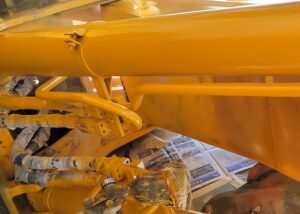
Paints occupy an important position in the market due to their flexibility, ease of construction and wider application range. Whether it is on objects with complex shapes or on the surface of materials that cannot be cured at high temperatures, paints are still an irreplaceable choice. In my many years of industry experience, I have found that a correct understanding of the composition, process and adhesion mechanism of paints can help us optimize the coating effect, improve the durability of the coating, and reduce the cost of subsequent maintenance.
According to the National Coatings and Paint Association (NPCA) , the paint market still accounts for more than 60% of the industrial coating market share worldwide , especially in the automotive, construction, shipbuilding and furniture industries, where its application is far more extensive than powder coating.
In a factory coating process optimization project, I compared the film-forming efficiency of different solvent-based paints and water-based paints and found that solvent-based paints have a short drying time and strong adaptability to the construction environment, but have higher VOC (volatile organic compound) emissions, while water-based paints are more environmentally friendly, but have higher requirements for humidity and temperature in the construction environment. This difference determines the applicability of paints in different application scenarios.
What Are The Different Types Of Paint
Paint can be roughly divided into wet spray paint, aerosol paint and enamel paint . These three types of paint have their own advantages in construction methods, durability, environmental protection and visual effects, but also have certain limitations. I have tested different types of paint in multiple painting projects and combined with industry standard data to make a comprehensive analysis of the applicability of each paint.
Wet Spray Paint
Wet spray painting is the most common industrial painting method at present. It mainly uses a high-pressure spray gun to atomize liquid paint and evenly spray it on the surface of the object. Due to its uniform spraying and strong adaptability, it is widely used in industries such as automobile manufacturing, furniture painting, and mechanical equipment protection .
On an automobile production line, I observed that wet spray painting can be applied to a variety of materials such as metal, plastic, wood, etc., and the coating thickness, color and gloss can be adjusted to meet the needs of different products. A significant advantage of wet spray painting is that the coating thickness is controllable, usually adjustable between 10µm and 200µm , which can meet different needs from decorative coatings to industrial protective coatings. In the ASTM D823-18 spray thickness control test , the thickness error of the precisely controlled wet spray paint coating can be kept within ±5µm , ensuring the consistency of the product and the stability of the coating. In addition, wet spray painting can be adapted to automated painting production lines , which can significantly improve efficiency in large-scale production environments.
However, the limitations of wet spray painting cannot be ignored. First, it takes a long time to dry . It usually takes 2-48 hours for the solvent to evaporate and the paint film to cure . If you want to speed up the curing speed, you need to configure additional drying equipment or use ultraviolet curing technology . In a test at a furniture factory, wet spray paint without drying equipment took more than 24 hours to reach a fully cured state, while with infrared drying equipment , the curing time can be shortened to 2-3 hours . Secondly, wet spray paint has high VOC (volatile organic compound) emissions , and harmful gases such as toluene and xylene will be released during the construction process , posing health risks to construction workers and the environment. According to the EPA (U.S. Environmental Protection Agency) VOC limit standards , the VOC content of solvent-based wet spray paint is usually as high as 400-600g/L , far exceeding water-based paint (50-100g/L). Therefore, when using wet spray paint, it is necessary to ensure that the construction environment is well ventilated and use VOC filtering equipment to reduce harmful emissions.
Spray Paint
Spray paint is a type of paint that comes in aerosol cans. It is easy to use and does not require additional equipment. It is widely used in small object repairs, DIY handicrafts, and artistic creations . One of the outstanding advantages of spray paint is that it is easy to operate. Just press the nozzle to coat the surface, which is very suitable for non-professionals. I have tested spray paint in model making and metal repair projects and found that it can dry quickly within 5-10 minutes and provide a relatively uniform coating effect . In addition, spray paint has a wide variety of colors and is suitable for personalized custom painting, such as metallic colors, matte colors, gradient colors and other special coating effects.
However, the limitations of spray paint are quite obvious. The first is the limited coverage area . Generally, a 400ml bottle of spray paint can only cover an area of 0.5-1 square meters . Compared with wet spray paint or roller paint, its material consumption cost is higher. In the ISO6504-3 coating coverage test , the coating rate of spray paint is 30-50% lower than that of traditional paint , so it is not economical for large-scale construction. In addition, since spray paint relies on gas pressure for spraying, its spray angle and uniformity are limited, and it is difficult to achieve the effect of professional spraying equipment. When I was spraying metal products, I found that if the spraying angle is not good, uneven coating thickness, bubbles and sagging are likely to occur , which is unacceptable in the field of high-demand industrial coating.
Enamel Paint
Enamel paint is known for its high gloss, high hardness and wear resistance , and is often used in metal products, home appliance casings, handicrafts and other fields. An important feature of enamel paint is that it forms a hard surface similar to enamel after film formation , which makes it superior to ordinary paint in mechanical strength and corrosion resistance . I have tested enamel paint in a metal guardrail project and found that its wear resistance can reach the ASTMD4060 grinding wheel wear test standard and can withstand 1000-2000 frictions without obvious wear . In addition, enamel paint has good chemical resistance. In the ASTM D1308 chemical resistance test , its resistance to acids, alkalis, and solvents is significantly better than that of ordinary paint, and it is particularly suitable for humid or corrosive environments.
However, the construction requirements of enamel paint are relatively high. First of all, the drying time is long , usually requiring 24-48 hours to fully cure, which is a challenge to production efficiency. On the coating line of a home appliance manufacturer, the refrigerator shell coating using ordinary enamel paint takes 36 hours to fully harden, while after adopting the thermal curing process , the curing time is shortened to 6-8 hours . Secondly, the thickness of enamel paint needs to be strictly controlled during the construction process. If it is not evenly applied, it is easy to form brush marks and sagging , affecting the aesthetics. In the coating of high-end furniture and artworks, it is usually necessary to go through processes such as grinding and secondary spraying to obtain the ideal paint film effect, which invisibly increases the construction cost and time.
Key Differences Between Powder Coating And Paint
The main differences between powder coating and paint are in construction process, durability, environmental protection and cost. Powder coating is electrostatically sprayed and cured at high temperature to form a stronger surface with better wear resistance and corrosion resistance than traditional paint. Paint is liquid and requires solvent-assisted spraying. Although it is suitable for a variety of substrates, it has low durability and may release VOCs, which has an impact on the environment. In addition, powder coating has a more uniform thickness in one-time coating, does not require multi-layer construction, reduces material waste, and improves production efficiency. It is the preferred solution in industrial applications.
| Compare Projects | Powder coating | Paint |
| Construction Technology | Electrostatic spraying + high temperature curing (180-220°C) | Wet spray painting, brushing, dipping, etc., relying on solvent evaporation to cure |
| Coating Thickness | One-time spraying can reach 50-300μm with high uniformity | Need to spray multiple times, usually 10-50μm |
| Wear Resistance | A dense coating is formed by high temperature curing, which is scratch resistant and has a Taber abrasion test value of <5mg/1000 times. | Susceptible to wear, Taber wear test value> 20mg/1000 times |
| Corrosion Resistance | No rust after 2000 hours of salt spray test (ASTM B117) | Ordinary paint may corrode within 500 hours |
| Adhesion | Through high temperature cross-linking reaction, the coating is strong and not easy to peel off | Depends on primer, adhesion is greatly affected by substrate and environment |
| Construction Efficiency | Electrostatic spraying efficiency is over 95%, one-time coating and forming | Traditional spraying has low efficiency, 60%-80%, and multiple processes take a long time |
| Curing Time | 15-30 minutes (180-220°C) | 2-48 hours (solvent volatilization and curing) |
| Color Selection | Color is stable, Pantone color card coverage is over 90% | On-site color adjustment is possible, and gradient color performance is better |
| Glossiness | 10%-95% adjustable, rich texture (matte, sand grain, wrinkle, etc.) | 5%-90%, can achieve high gloss and pearlescent effects |
| Environmental Performance | VOCs emission <5mg/m³, compliant with RoHS directive | VOCs emissions 300-800mg/m³, additional waste gas treatment required |
| Weather Resistance | Fluorocarbon powder can keep color for more than 15 years without fading | Ordinary paint may fade and chalk after 3-5 years |
| Recyclability | More than 95% of the powder can be recycled, with less material waste | Solvent-based paints are not recyclable and result in a lot of material waste |
| Application | Industrial equipment, automotive parts, building exteriors, home appliance housings | Furniture, car exterior, architectural decoration, artistic painting |
| Maintenance Costs | Low maintenance, only requires cleaning every 10 years | Need to be repainted regularly, maintenance every 3-5 years |
| Initial Cost | Higher equipment Investment ($50,000-$500,000), but low long-term costs | Low equipment investment ($10,000-$100,000), high long-term operating costs |
How To Choose The Right Surface Treatment
Choosing the right surface treatment process requires comprehensive consideration of material compatibility, budget, use environment, visual needs , and maintenance requirements . For example, powder coating may be a better choice for metal products that are exposed to moisture, high temperature, or corrosion outdoors for a long time, while paint is suitable for scenes that require highly customized colors and compatibility with different materials.
Material Type
Different materials have different adaptability to surface treatment. For metal materials, both powder coating and paint are applicable, but powder coating has particularly good adhesion and protective properties on metal surfaces such as aluminum alloys and steel, and can effectively resist oxidation and corrosion of metals. For materials such as wood and plastic, paint is more advantageous because it has better flexibility and compatibility, can better adapt to the characteristics of these materials, and avoid cracking or shedding of the coating due to the expansion and contraction of the materials. For example, wooden furniture can better show the texture and feel of the wood by using paint, while plastic products can obtain rich and diverse colors and surface effects by using paint.
Budget
If the budget is limited and the durability requirements for the surface treatment are not particularly high, paint may be a more suitable choice. The initial cost of paint is low, the equipment investment is relatively small, the construction process is relatively simple, and the labor cost is not high. However, if in the long run, the project needs to withstand the test of harsh environments and pursue low maintenance costs and long service life, then although the initial investment of powder coating is large, its high durability and low maintenance cost can save a lot of money during use, and it is more cost-effective in the long run.
Environment
The environment is crucial to the choice of surface treatment. In harsh outdoor environments such as high ultraviolet rays, high humidity, and high salinity, powder coating has obvious advantages in weather resistance and corrosion resistance. It can effectively protect the surface of objects and reduce fading, chalking, and corrosion. It is suitable for outdoor light poles, building curtain walls, bridges and other facilities. In indoor environments, the weather resistance requirements for surface treatment are relatively low. Paint can meet various decoration needs with its diverse colors and rich surface effects, and is widely used in indoor furniture, wall decoration, etc.
Visual Requirements
If you are looking for highly customized colors and special texture effects, paint has a stronger advantage. It can easily mix a variety of bright colors, and can also achieve unique visual effects such as cracks and metallic textures through special processes to meet the needs of creative design. While the color selection of powder coating is relatively fixed, it can provide a uniform and flat surface effect, and performs well in situations where high surface flatness is required, such as home appliance housings, automotive parts, etc.
FAQs
Is Powder Coating Better Than Spray Painting?
Powder coatings are superior to traditional spray painting in terms of durability, environmental friendliness and cost-effectiveness. Powder coatings are 3-5 times more wear-resistant than ordinary paints , and their adhesion and corrosion resistance are also stronger. For example, in the ASTM B117 salt spray test, epoxy powder coatings can last for 2,000 hours without rusting, while spray painting can usually only last for 500 hours . In addition, powder coatings do not contain solvents, have almost zero VOCs emissions, and meet RoHS and EPA environmental standards, so they are gradually replacing traditional spray painting in industrial manufacturing and construction applications.
How Long Does Powder Coating Last?
The life of powder coating depends on the environment in which it is used and the type of coating. In indoor environments, powder coatings can remain colorfast and non-flaking for more than 20 years , while outdoor weather-resistant powder coatings (such as polyester or fluorocarbon powders) can last for 10-15 years or even longer. Under ISO 12944, in C5-M (highly corrosive marine environment) conditions, the protective life of powder coatings is 8-12 years , far exceeding the 3-5 years of spray painting , so it is widely used in applications with high durability requirements (such as bridges and building curtain walls).
Does Powder Coating Scratch Easily?
Powder coating is more scratch-resistant than spray paint, but it can still be damaged by external forces. According to the Taber abrasion test (ASTM D4060), the wear value of high-performance powder coatings (such as polyurethane and epoxy powders) is less than 5mg/1000 times , which is more than 4 times higher than ordinary paint (>20mg/1000 times) . In daily applications, such as car wheels, fitness equipment, etc., powder coating performs well, but if used in extreme conditions (such as metal tools), hardeners or special treatments (such as ceramic reinforced powders) are still required to improve scratch resistance.
Does Powder Coating Prevent Rust?
Powder coating has excellent anti-rust ability, especially epoxy powder and zinc-rich powder coating. In the ASTM B117 salt spray test, ordinary steel can only withstand 24 hours of salt spray, while steel treated with powder coating can withstand 1000-3000 hours without corrosion. For example, a power tower project used zinc-rich powder coating and no obvious rust occurred in 20 years. In contrast, traditional paints are prone to lose their anti-rust protection due to cracking of the coating in outdoor environments, so powder coating is more suitable for long-term protection applications.
Does Powder Coating Last In Sunlight?
The UV resistance of powder coatings depends on their resin type. Polyester and fluorocarbon powder coatings can withstand more than 5,000 hours of UV exposure in QUV accelerated aging tests , while ordinary spray paints can usually only last 1,000 hours . In building curtain walls, outdoor light poles and solar equipment, fluorocarbon powder coatings have a color difference of ΔE<2 (imperceptible to the naked eye), which ensures that the coating will not fade for more than 15 years . In contrast, spray paints usually begin to powder or change color after 3-5 years in outdoor environments, so powder coatings are more suitable for applications exposed to sunlight for a long time.
What Happens If You Apply Powder Coating Over Rust?
Applying powder coating directly to rusty surfaces may cause the coating to peel and fail. Powder coating requires a clean substrate to adhere effectively, otherwise it will cause blistering or peeling due to the continued diffusion of the oxide layer under the substrate. In the ASTM D1654 adhesion test, the adhesion score of untreated rusted metal after powder coating is only 1B (the worst level) , while the metal treated by sandblasting can reach 5B (the highest level) . Therefore, before applying powder coating on rusty workpieces, sandblasting or chemical rust removal must be carried out to ensure long-term protection.
Conclusion
Powder coating and paint are two common surface treatment technologies, each with its own unique advantages and scope of application. When choosing a surface treatment method, it is necessary to comprehensively consider factors such as material type, budget, use environment, and visual needs. Only by making scientific and reasonable choices based on specific project requirements and actual conditions can the advantages of these two surface treatment technologies be fully utilized, the best surface treatment effect can be achieved, and the needs of different industries and users can be met.

